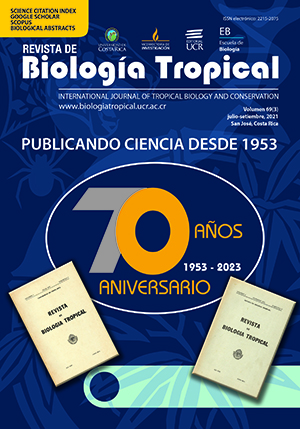Abstract
Introduction: The variability in the structure of aquatic communities is frequently attributed to environmental changes; however, in stable environments such as regulated rivers, trophic interactions could be another key environmental factor determining the structure of these communities. These alterations could cause a greater growth of algae, and in turn, changes in the functional groups and in the composition of the macroinvertebrate community favoring the dominance of certain groups of organisms. Objective: To identify the effects of environmental variations and changes in the structure of the phycoperiphyton on the macroinvertebrate community of regulated Andean rivers. Methods: We analyzed environmental and biological data collected in quarterly samples carried out between 2010 and 2018 in two rivers of the Central Andes (Antioquia - Colombia), for a total of 27 samples. Sample collections used standardized methods. Different statistical models were used to establish spatial and temporal patterns of the environmental variables, of the abundance and/or density and diversity of phycoperiphyton and macroinvertebrates, as well as the trophic relationships that exists between them. Results: We found that regulated rivers present relatively little environmental variability. The environmental parameters with the greatest variation were temperature, turbidity, and orthophosphates; these last two were the abiotic variables with the greatest contribution to benthic instability. Conclusion: The presence of scraping and foraging macroinvertebrates was more affected by the stability of the phycoperiphyton density than by environmental variables, showing the importance of trophic interactions in regulated rivers and the bottom up control in these ecosystems.
##plugins.facebook.comentarios##

This work is licensed under a Creative Commons Attribution 4.0 International License.
Copyright (c) 2023 Revista de Biología Tropical



